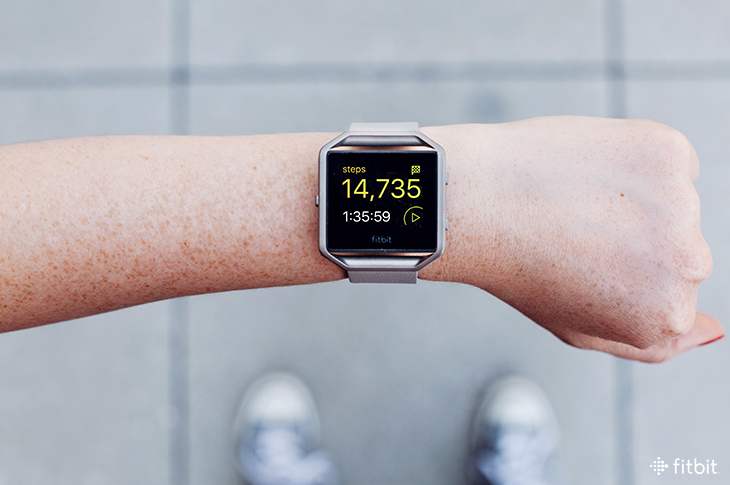
Fitbit’s default step goal is 10,000 steps—and for good reason. But new evidence questions whether that number is ambitious enough to be effective.
In a recent study of postal workers, researchers found that employees who sit the most tend to have higher BMIs, bigger waistlines, and higher cholesterol than those who moved more. Meanwhile, those who fit in the most physical activity—hitting about 15,000 steps (roughly seven miles) a day—had normal BMIs and waistlines and no heightened risk of heart disease.
So should you be striving for 15,000 steps?
That depends on one main factor: Your current baseline, says ACE-certified walking coach Michele Stanten, author of the new book Walk Your Way to Better Health.
“If you have a sedentary job and come home and sit in front of the TV, getting to 15,000 steps might mean a major overhaul of your lifestyle,” says Stanten. “I was shocked to discover that on days when I was in the office late, I was only getting about 3,000 steps.”
Regardless of how far below 15,000 steps you fall, Stanten suggests aiming to increase your total by between 1,000 and 2,000 a day for a week or two, then continuing to gradually bump up your total until you get to 15,000. “All the research shows that when you go from doing less to more, you are going to get more cardio, more calorie burn, and more weight-loss benefits no matter where you start,” she says.
Moving more will likely require squeezing in a couple of 10- to 15-minute walks each day. Stanten also walks everywhere within a one-mile radius, eschews drive-throughs (whether it’s for banking, coffee, or the drugstore), and never drives from store to store at the mall. “I also stopped bringing a chair to my son’s baseball games and started walking around and getting great photos instead,” she says.
Stay Healthy At Any Step Count
If fitting 15,000 steps into one day isn’t realistic for you, don’t despair. Ten-thousand steps is still linked to multiple health benefits, but even that may not be the right number for you. For instance, you may be able to get away with fewer steps if you’re moving quickly. “You’ll get more cardio benefits when you walk at a moderate or brisk pace,” says Stanten, who suggests adding 30- to 60-second speed-walking intervals to your daily strolls. “If you don’t want to use a timer, you can even just walk fast for one block and then recover for two to three.”
And remember, other forms of exercise matter, too. If you regularly hit the gym for an indoor-cycling class, it won’t show up as steps—but it does count toward the 30 minutes of moderate-intensity aerobic activity the Department of Health and Human Services recommends you get five days a week.
“I don’t always hit my 10,000 steps a day,” says Stanten, “but I do hit my 30 active minutes.”
This information is for educational purposes only and is not intended as a substitute for medical diagnosis or treatment. You should not use this information to diagnose or treat a health problem or condition. Always check with your doctor before changing your diet, altering your sleep habits, taking supplements, or starting a new fitness routine.

I just got a Fitbit; I am trying to see what a normal day encompasses then set a goal from there. I think your goal is highly dependent on your job. for example a PE teacher would have a goal of 15,000 to 20,000 but for a cubicle office worker 10,000 would be reasonable. You do not want to stress out on your steps as we all know stressing is a huge health concern as well.